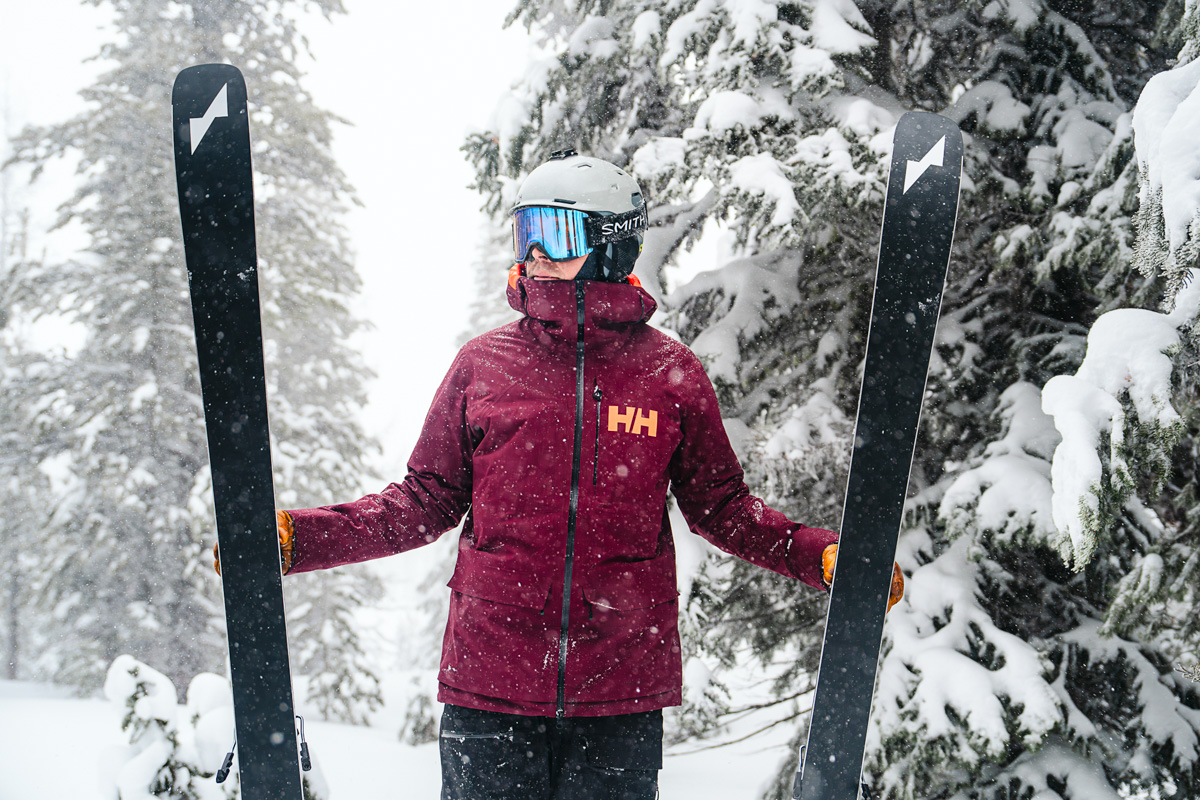
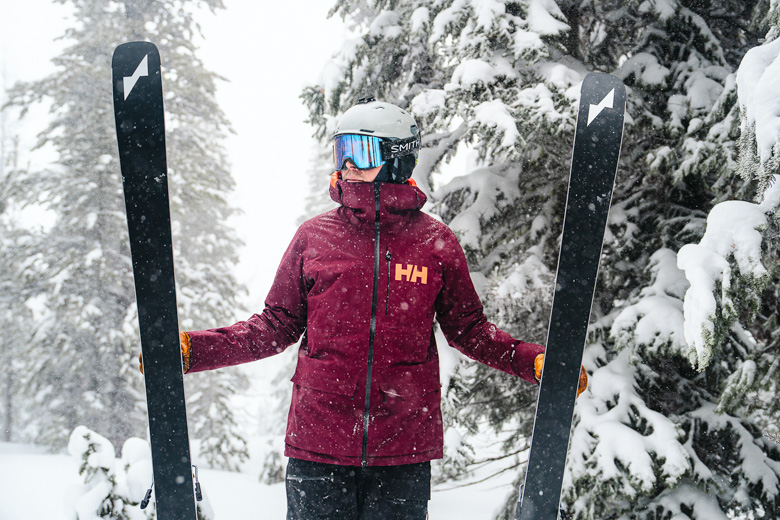
Price: $650
Waterproofing: 3L Helly Tech Professional
Weight: 1 lb. 10.1 oz.
What we like: Durable, highly weather-resistant, and stylish with a keen attention to detail.
What we don't: Not a standout in breathability; on the heavier end for backcountry use.
See the Men's Ridge Infinity Shell Jacket
Helly Hansen is a trusted name in the ski community, and their Ridge Infinity Shell Jacket is a clear reflection of the brand's longstanding expertise. We put this jacket through its paces over an entire season in eastern Washington, encountering everything from bluebird skies to wet powder and windy hardpack conditions. Throughout it all, the Ridge Infinity impressed us with its ability to handle the full gamut of inclement weather. While its bulky build and lack of breathability limit it to inbounds use and the occasional sidecountry hike, its freeride-inspired styling, top-notch fit and finish, and excellent durability have secured it as one of our favorite resort pieces. Below we break down our experiences with the Ridge Infinity Shell Jacket. To see how it stacks up to the competition, check out our article on the best ski jackets. And to complete your kit, we’ve also tested and reviewed the Ridge Infinity Shell Bibs.
The Helly Hansen Ridge Infinity Shell excelled in a wide range of harsh conditions, proving itself as an effective barrier against both moisture and wind. Boasting the brand's 3-layer Helly Tech Professional construction with a durable water-repellent (DWR) finish, the jacket kept me dry during prolonged exposure to snow and never threatened to wet out. During testing at Mission Ridge, an eastern Washington ski resort that's known for its windy conditions, the jacket’s performance was particularly notable. It consistently blocked strong gusts with ease, outperforming the REI Co-op First Chair GTX (a 2-layer design) in side-by-side testing. The difference was so stark that I initially assumed the vents on my REI jacket were open (spoiler: They weren't). And importantly, the Ridge Infinity's DWR coating has retained its water-shedding abilities, with no need for reapplication after a full season of consistent use.
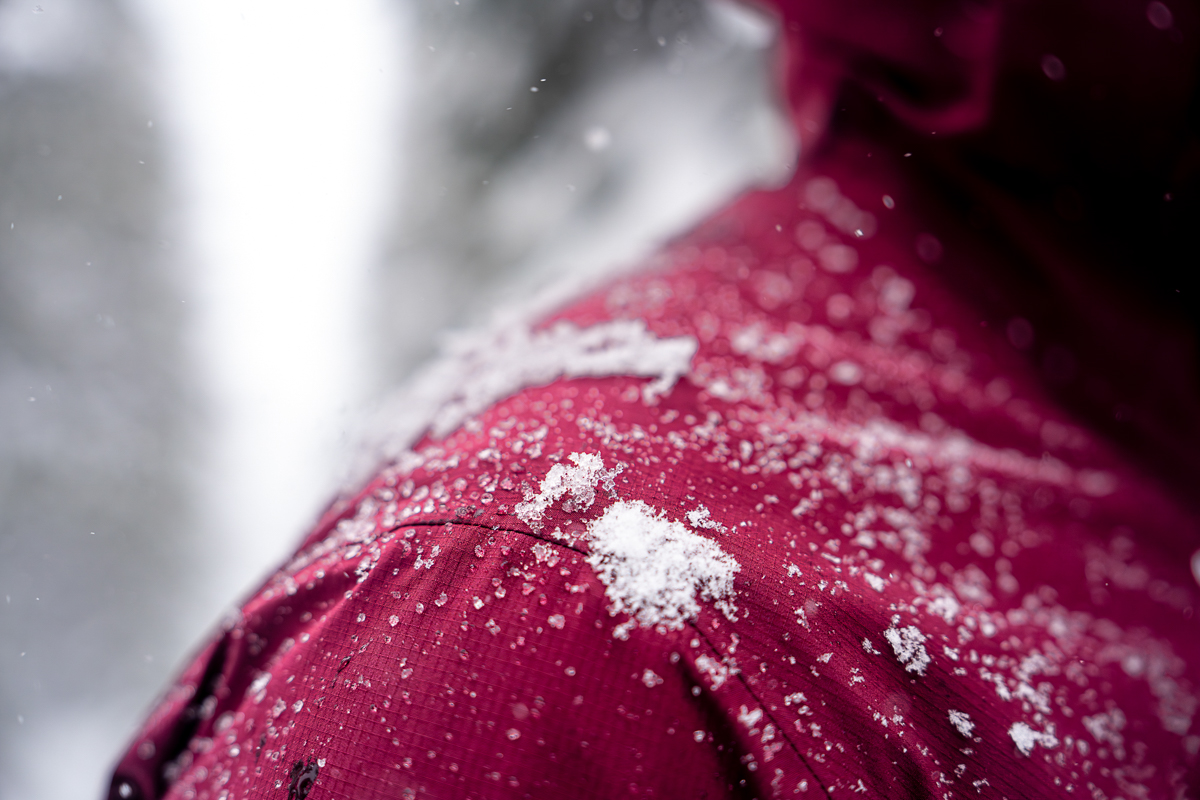
The Ridge Infinity is fully seam-taped, which contributes to the jacket's stalwart feel. Further, the tall collar provides ample coverage for my neck and lower face when fully zipped, though I do wish it were slightly wider to better accommodate bulkier layers. The hood is another standout feature: It's easy to adjust, stays securely in place, and offers excellent coverage without impeding mobility or field of view (more in "Key Features" below). Additionally, the jacket's length is well suited for resort use, keeping my back fully covered on chairlifts, and the integrated powder skirt (which pairs seamlessly with Helly Hansen bibs and pants) and adjustable hem create a reliable barrier against powder. Finally, the long cuffs fit comfortably over my gloves and stay in place even with frequent arm movements.
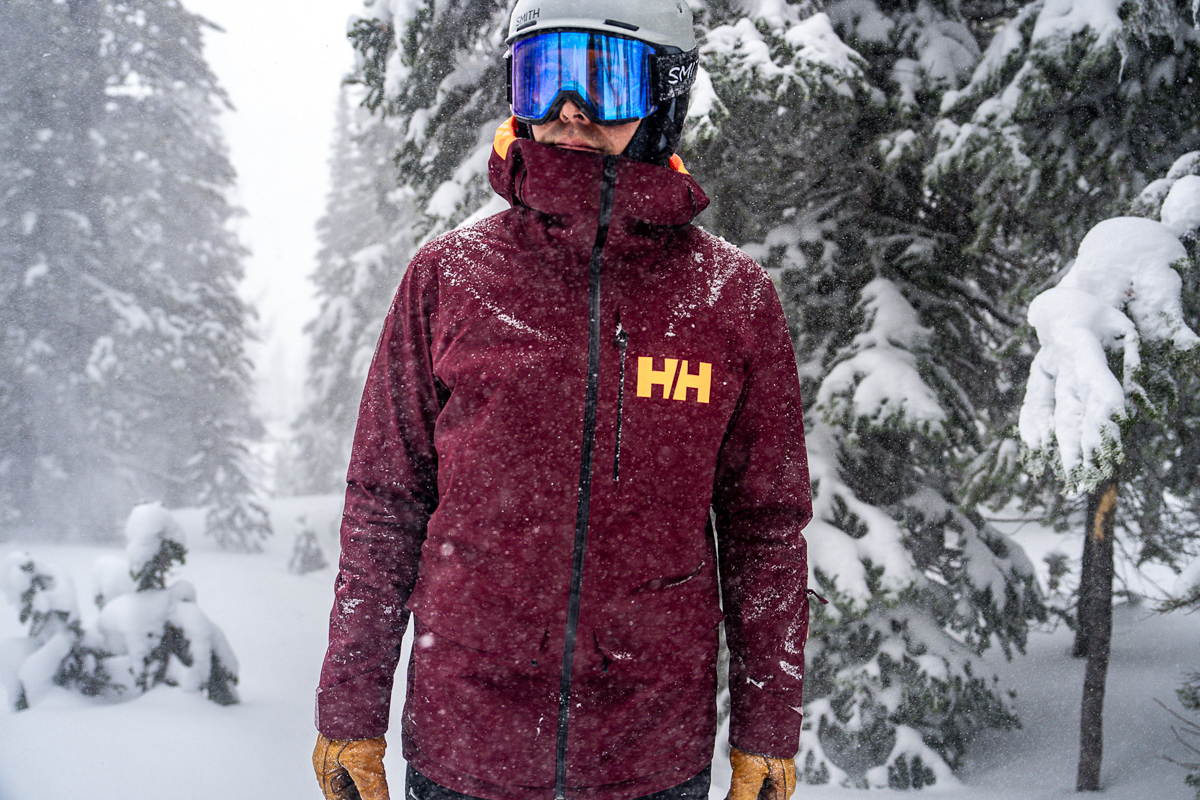
As is typical with highly weather-resistant layers, the Ridge Infinity’s breathability is somewhat compromised. This isn’t much of a concern when sticking to the resort, but committed backcountry riders will almost certainly want something more air-permeable. Unless you’re touring in severe weather, the Ridge Infinity isn’t a layer for the skin track. To be fair, the jacket does come with pit zips for dumping excess heat, but they're not the biggest I've seen—they extend from the armpit to about a quarter of the way down my torso. If breathability is a top concern, I'd recommend going with a better-ventilated design like the Outdoor Research Skytour AscentShell (at the sacrifice of some weather protection). But again, the Ridge Infinity is perfectly serviceable for inbounds use, and on warmer days, you can undo the main zipper for added airflow (provided conditions are favorable).
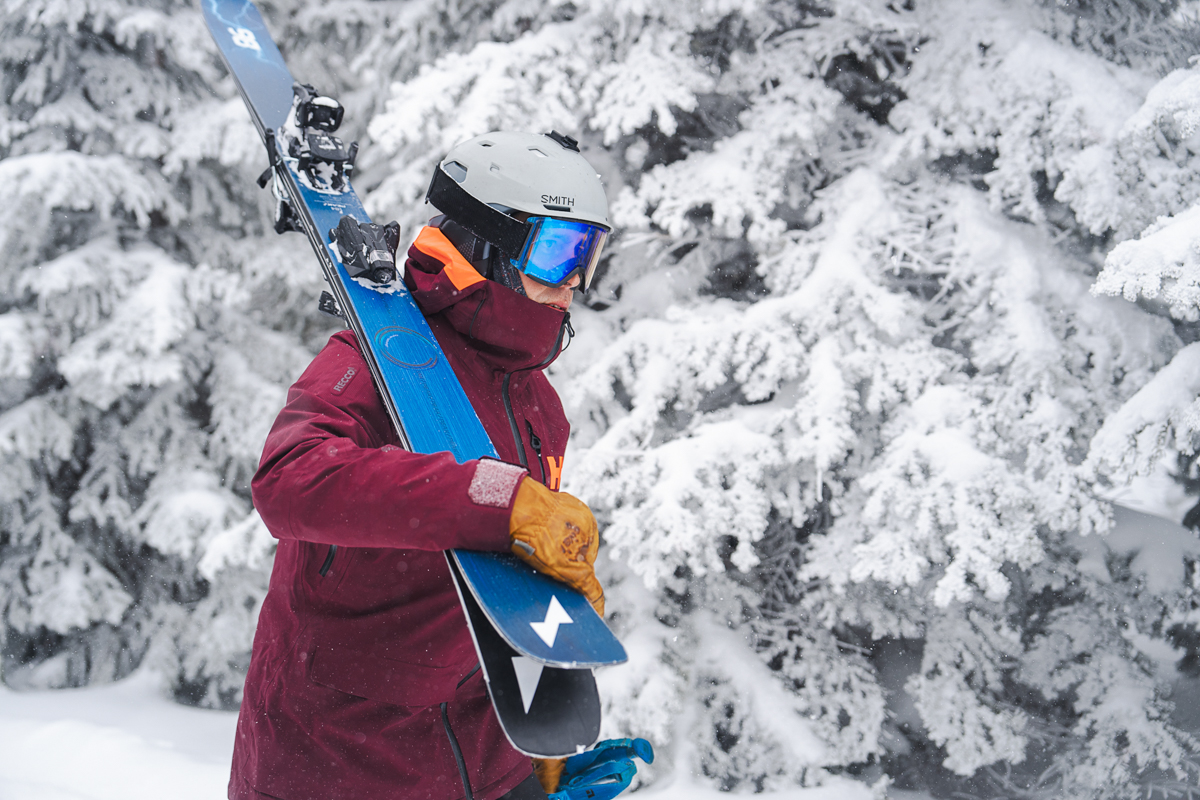
Overall, I came away with positive impressions regarding the Ridge Infinity's comfort. The looser, freeride-oriented fit easily accommodated a baselayer, midlayer, and puffy jacket for added warmth without feeling restrictive. Additionally, the 2-way mechanical stretch in the fabric allowed for excellent freedom of movement, making activities like bending down to adjust boots and bindings hassle-free. I'm also a big fan of the sleeves and cuffs, which were extremely easy to adjust over my Giv’r 4-Season gloves but flexible enough that they didn't restrict range of motion while skiing. I also appreciated the soft lining in the hand pockets, as well as the fleece chin guard. However, I did notice the zipper flap occasionally catching on my chin when looking over my right shoulder—not a dealbreaker by any means, but worth noting nonetheless. Finally, some users report discomfort from the jacket bunching underneath backpack straps. I rarely ski with a pack inbounds, but it's something to consider if you like to bring along supplies like water and snacks.
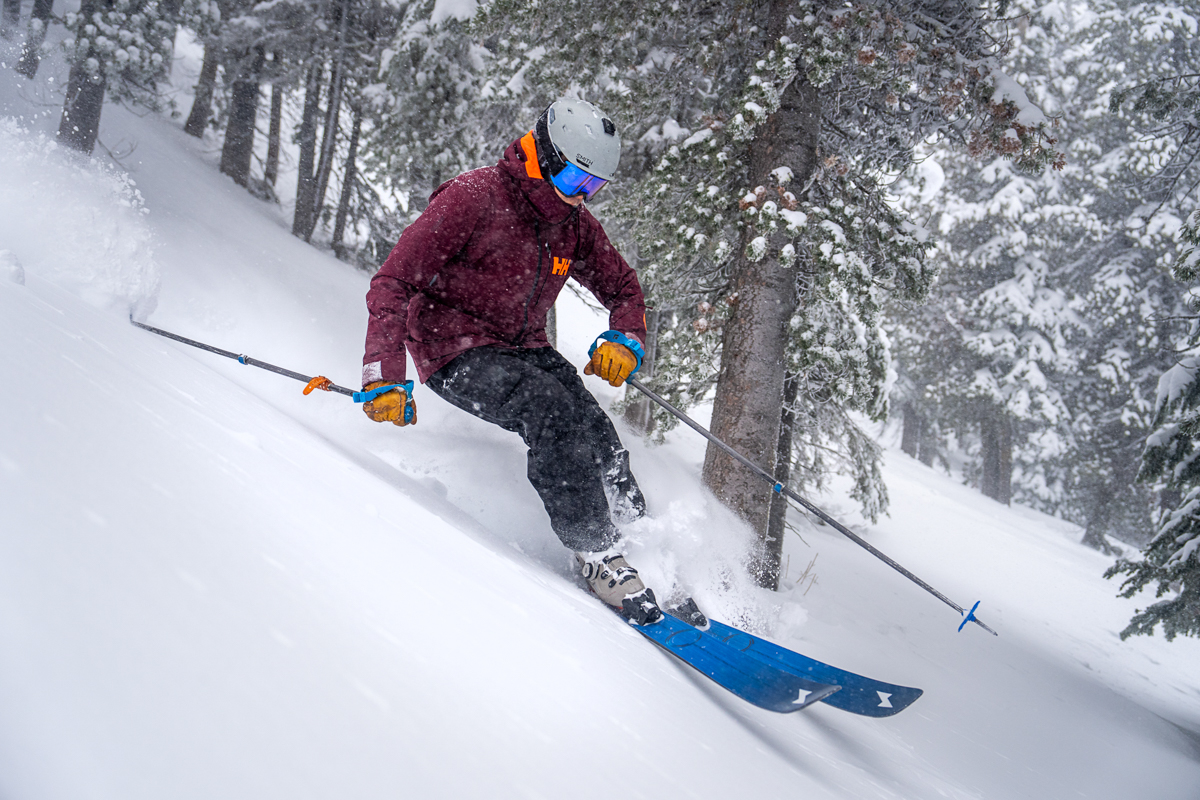
The Ridge Infinity Shell Jacket has a noticeably robust feel that lines up well with its intentions as a premium resort piece. In fact, throughout an entire season of use—including countless chairlift rides and navigating through tight trees—I encountered no durability issues. While Helly Hansen doesn't list the denier for the jacket (a measurement of fabric thickness), its sturdiness felt on par with hardwearing layers like Arc’teryx's Beta AR.
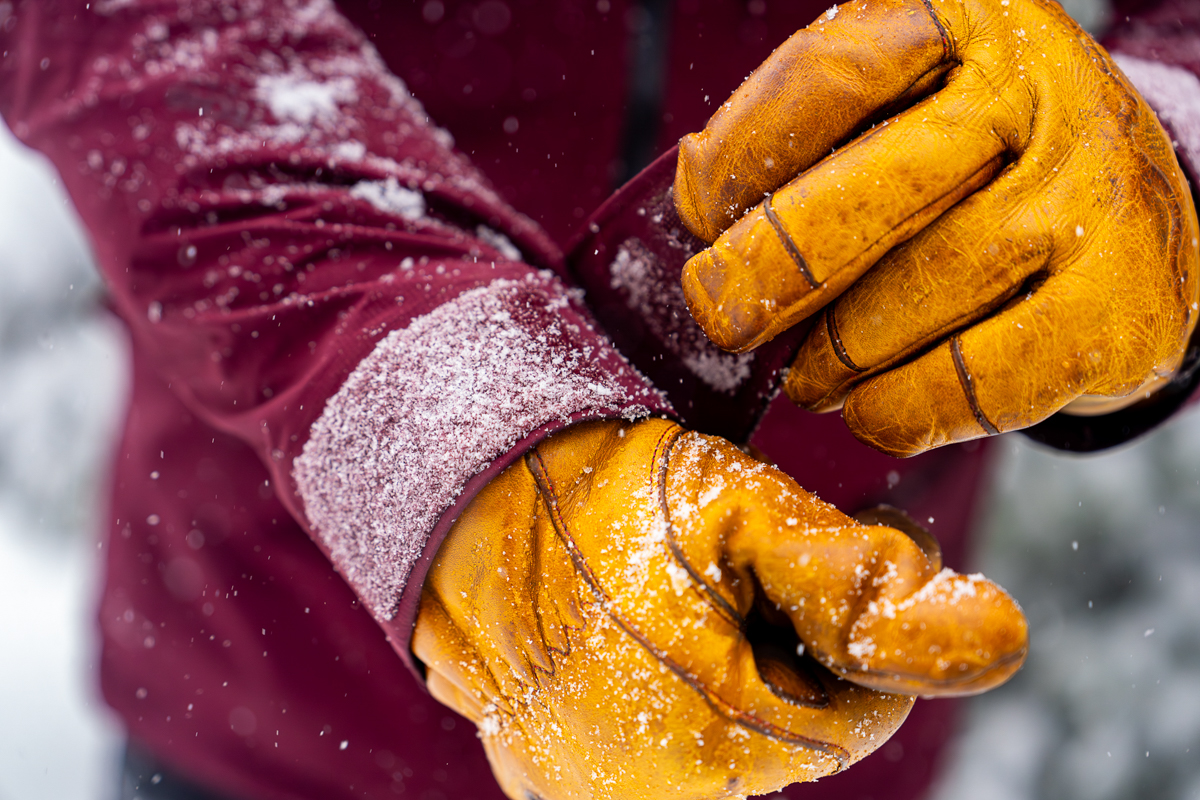
That said, I did come away with some small gripes in testing. For one, the main zipper was consistently difficult to manipulate—on occasion, it took me nearly five minutes to fully unzip the jacket. Additionally, as I mentioned above, the interior zipper flap frequently caught on my chin when turning my head. And finally, the Helly Hansen logo on the chest pocket is very prominent, especially in the Hickory colorway that I tested, although styling is largely a matter of personal preference.
Along with breathability, weight is another area where the Ridge Infinity secures its place as a resort/sidecountry piece rather than a dedicated backcountry shell. At 1 pound 10.1 ounces, it's not excessively heavy for inbounds use, undercutting competitors like Trew Gear's Cosmic Primo Jacket (1 lb. 14.1 oz.) while stacking up well to REI's 2-layer First Chair GTX Jacket (1 lb. 10.5 oz.). Dedicated backcountry riders can shave significant weight with a more purpose-built option like the Outdoor Research Skytour (1 lb. 5 oz.) or Arc'teryx's Beta AR hardshell (1 lb. 0.3 oz.), but the Skytour sacrifices some protection in the name of breathability, and the Beta AR lacks ski-specific features like a powder skirt and dump pockets. As expected, the Ridge Infinity also isn't a standout in terms of packability, but again, this won't be a concern for resort riders—even those who embark on the occasional sidecountry hike.
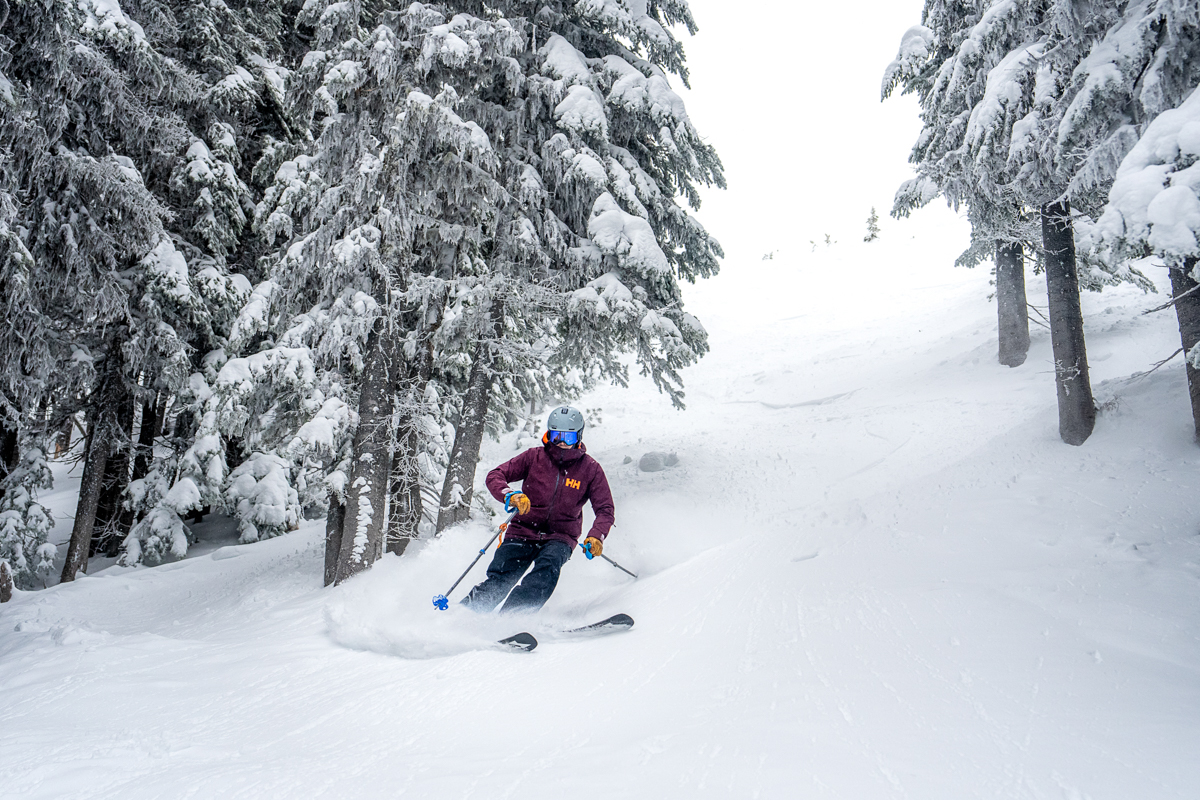
Put simply, the Ridge Infinity’s hood is one of the best I’ve tested. It paired seamlessly with my ski helmet and is fully adjustable to achieve a snug, secure fit. The hood features four adjustment points: a rear cinch that fine-tunes the brim, a neck drawcord to tighten the aperture, and two adjustment points at the base of the collar to customize fit along the sides. Once dialed in, the hood moved effortlessly with my head without restricting mobility or obstructing vision. The brim is another standout feature: It’s generous enough to provide extra protection during heavy snowfall without feeling bulky or intrusive. Overall, the thoughtful design and functionality make the Ridge Infinity’s hood a real highlight.
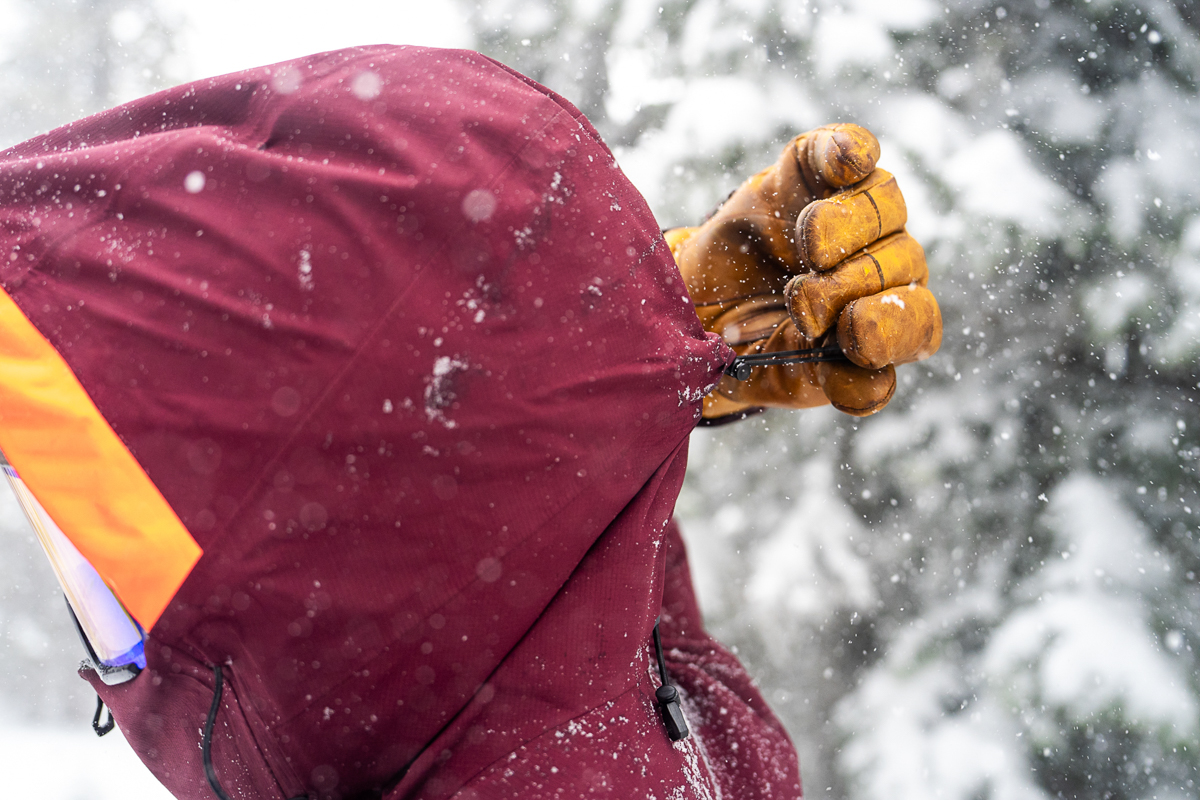
The Ridge Infinity Shell is far from minimalist when it comes to storage, boasting a total of six pockets. These include two horizontal hand pockets, one exterior and one interior chest pocket, a ski pass pocket on the left sleeve, and an internal dump pocket. The horizontal hand pockets are stylish and warm with a brushed lining, and their placement makes them accessible even when wearing a pack with a hipbelt. I found the dump pocket ideal for quickly stashing my ski goggles or climbing skins. The ski pass pocket on the sleeve was particularly convenient for resort days, and while I didn’t get a chance to fully test the exterior PrimaLoft Aerogel Pocket—which is insulated to preserve your phone's battery in cold conditions—I nevertheless appreciate the thoughtful inclusion.
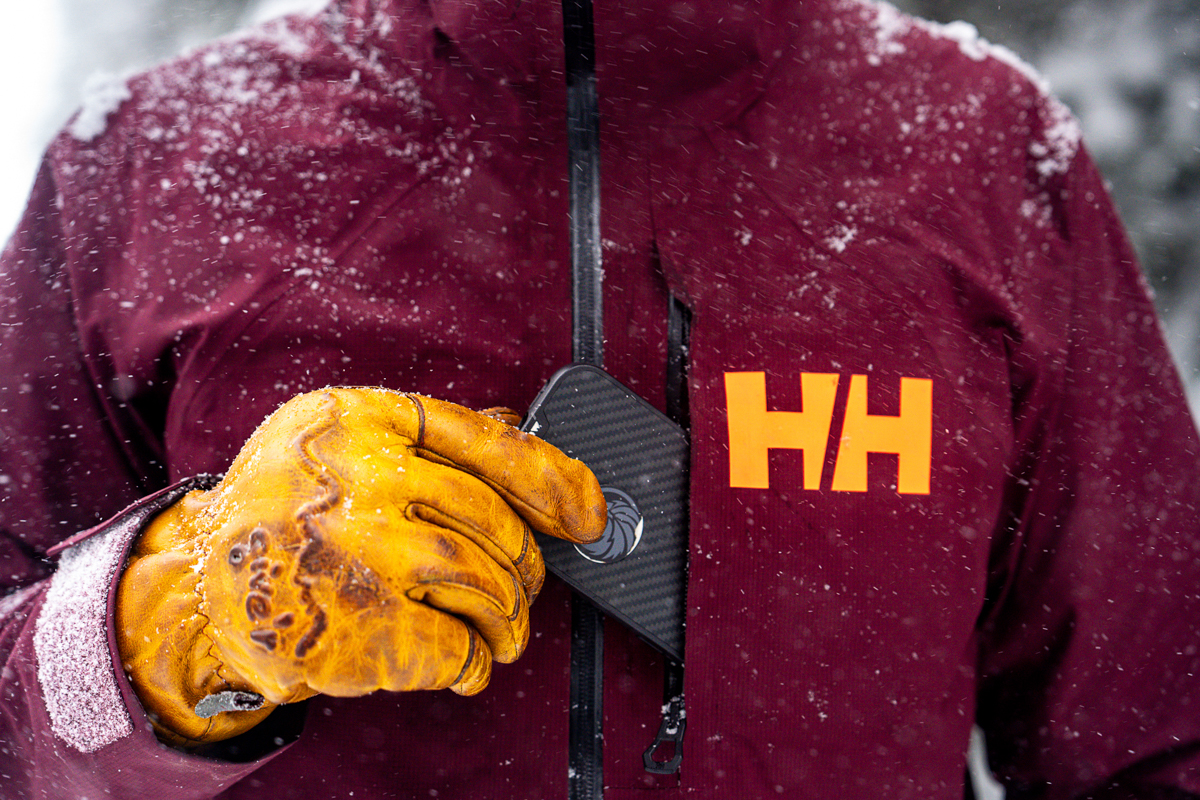
Like most ski-specific shells, the Ridge Infinity comes with a powder skirt for sealing out snow at the waist. The design is pretty standard but entirely functional, with snaps at the front for connecting the two sides together and a silicone-like band along the bottom for keeping it in place. Whether you're riding deep powder or take an unexpected fall, the skirt is a welcome addition that went largely unnoticed in testing.
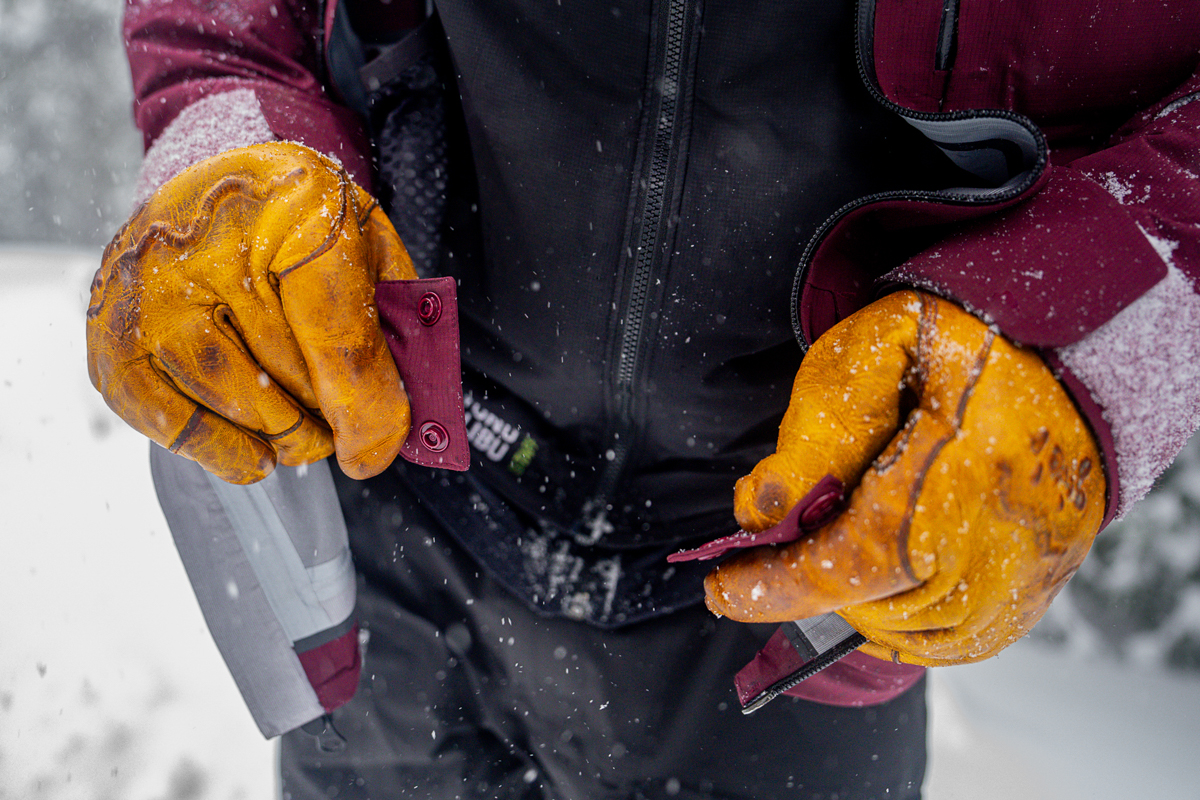
It’s worth noting that the Ridge Infinity Shell has an integrated Recco transponder, which is a passive unit that can be picked up by Recco detectors used by ski patrol personnel. Though it offers some peace of mind when ducking ropes and riding off-piste terrain, Recco is no replacement for an avalanche beacon, and backcountry riders should acquire the proper training and gear before heading into avalanche terrain (for a deeper dive, check out our detailed Backcountry Skiing Checklist). The good news is that the Recco reflector is integrated well into the design, adding an extra dose of safety with minimal bulk.
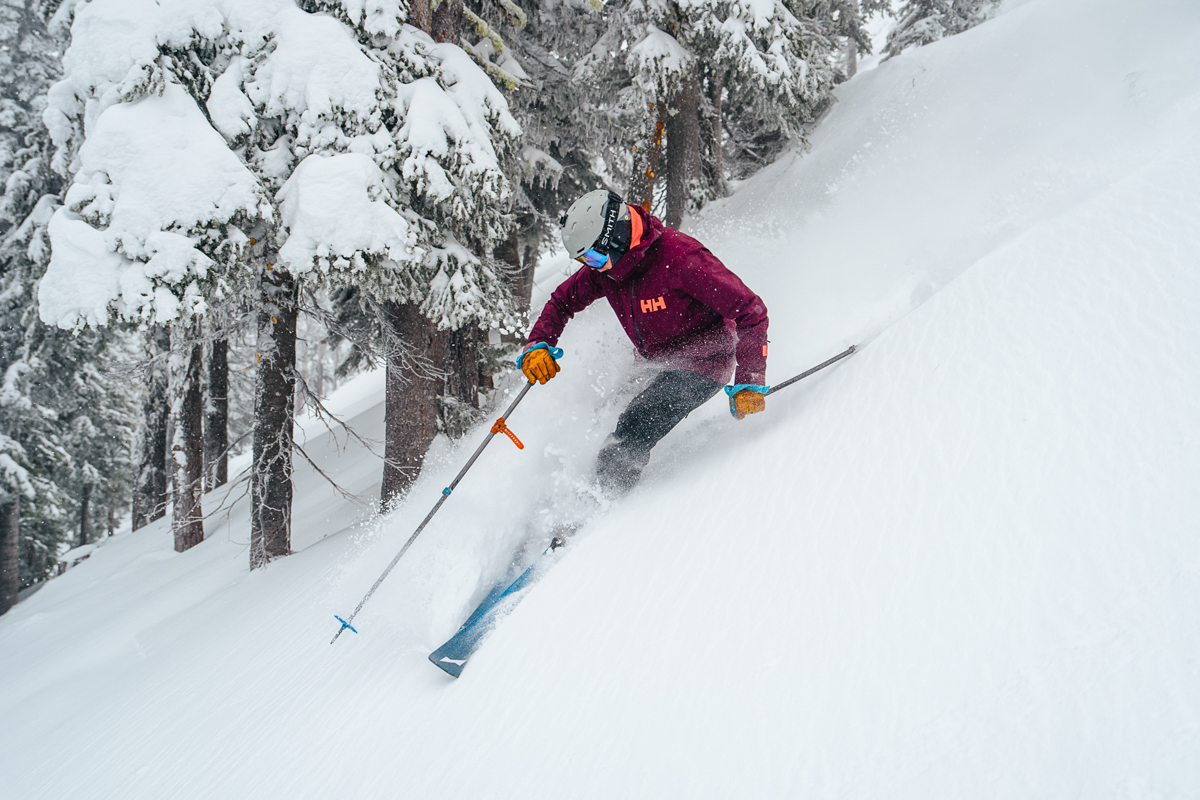
As I mentioned previously, the Ridge Infinity Shell Jacket has a roomy, freeride-oriented fit that makes it easy to layer heavily underneath. For reference, I'm 5'11" and weigh 165 pounds, and a size medium fit me well overall. It's worth noting that the jacket does have a subtle hourglass shape with a slight flare at the hips, which is particularly noticeable with the hem cinched. While this wasn’t a dealbreaker for me, skiers who like a sleek, streamlined aesthetic may be deterred by the Ridge's boxier cut.
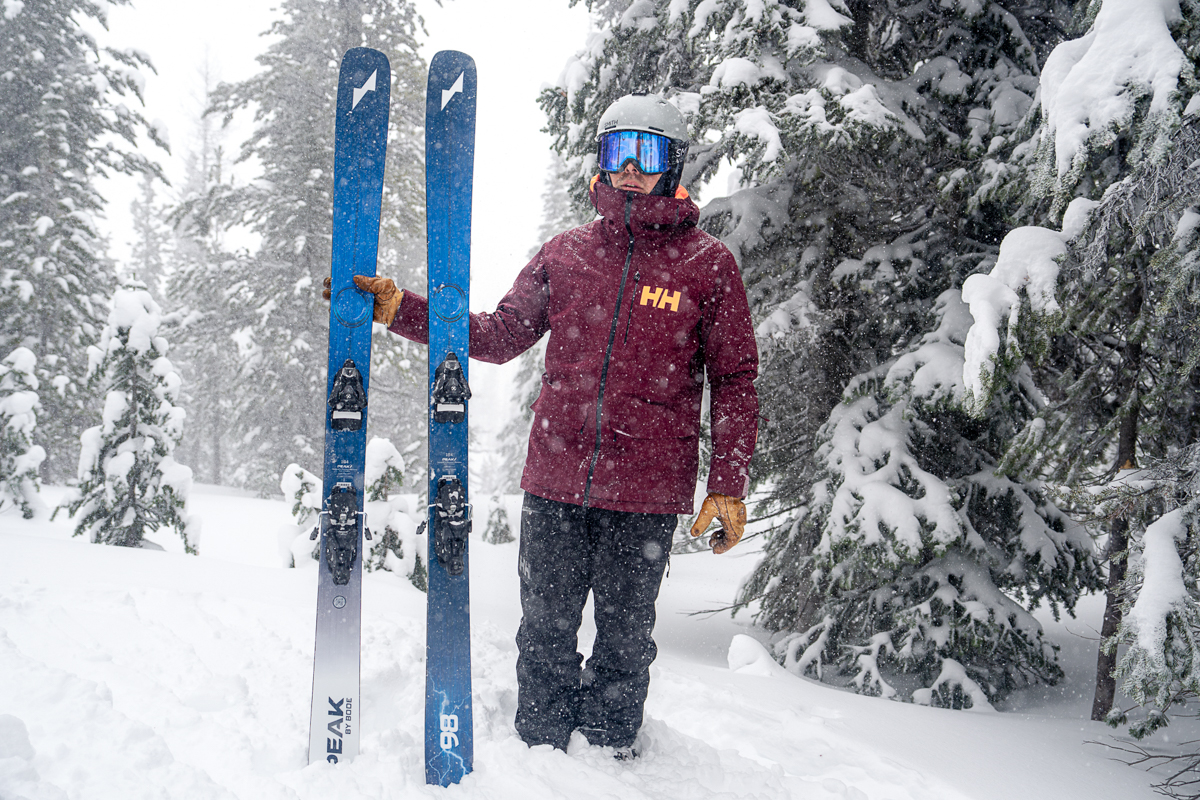
Helly Hansen has made notable inroads on the sustainability front in recent years, and the Ridge Infinity Shell nicely reflects their efforts. Specifically, the shell is made from 54%-recycled polyester and features a PFAS-free DWR coating that forgoes the use of harmful per- and polyfluoroalkyl substances—"forever chemicals" that are notorious for their inability to break down over time. We'd love to see Helly Hansen incorporate bluesign-approved materials and/or tack on a Fair Trade certification in future updates, but we nevertheless appreciate the measures they took with the Ridge Infinity.
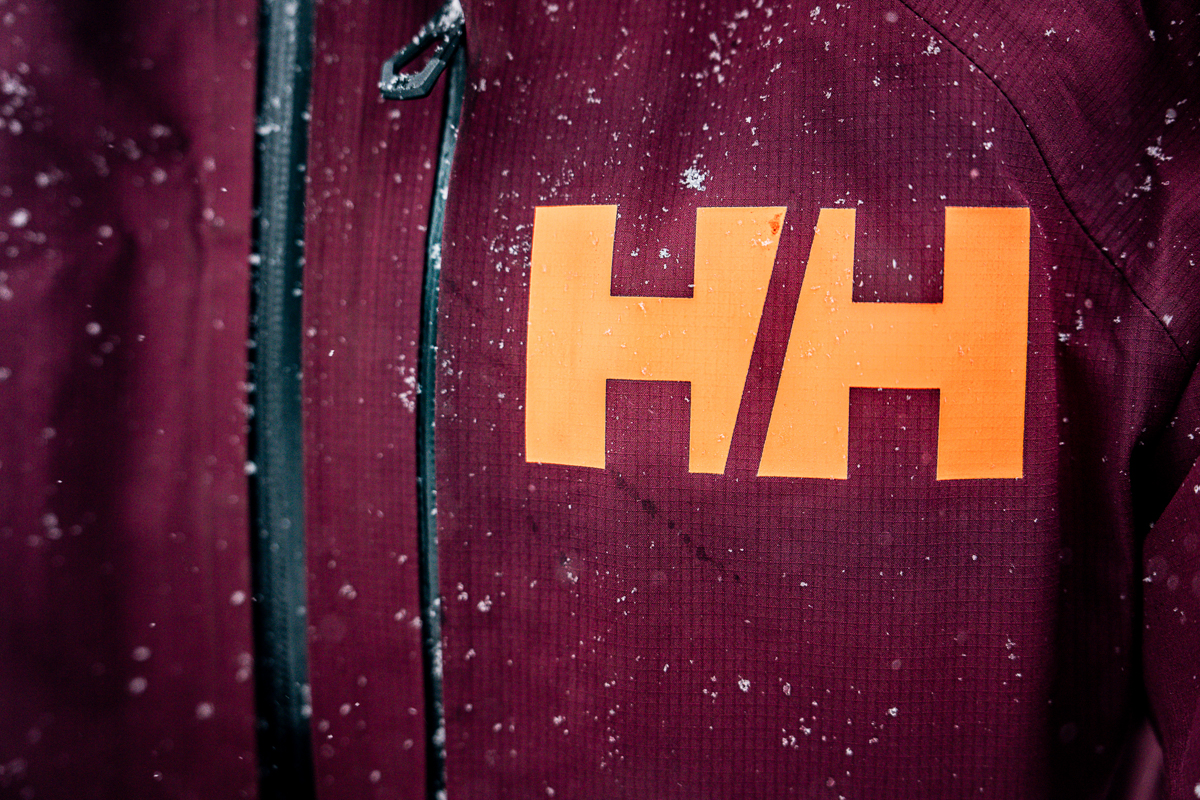
I tested the men’s Ridge Infinity Shell for this review, and although Helly Hansen doesn't offer a women's model under the same name, the Aurora Infinity Shell is very similar in terms of overall construction and performance. Like the Ridge Infinity, the Aurora boasts the brand's effective Helly Tech Professional waterproof membrane, comes fully seam-taped, and offers a similar feature set including an adjustable hood, powder skirt, and comparable pocket layout. For those who like an integrated kit, the Ridge Infinity is also available in pant and bib styles that cost $500 and $600, respectively (check out our in-depth review of the bibs here).
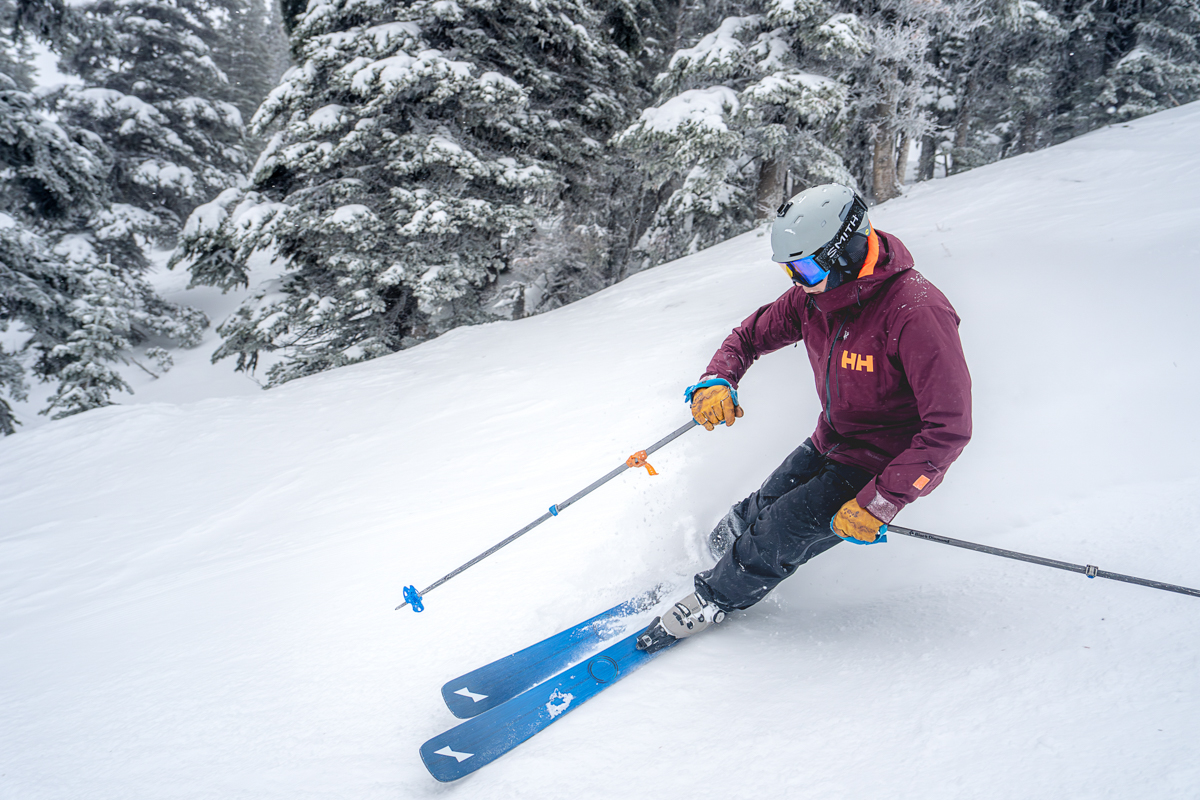
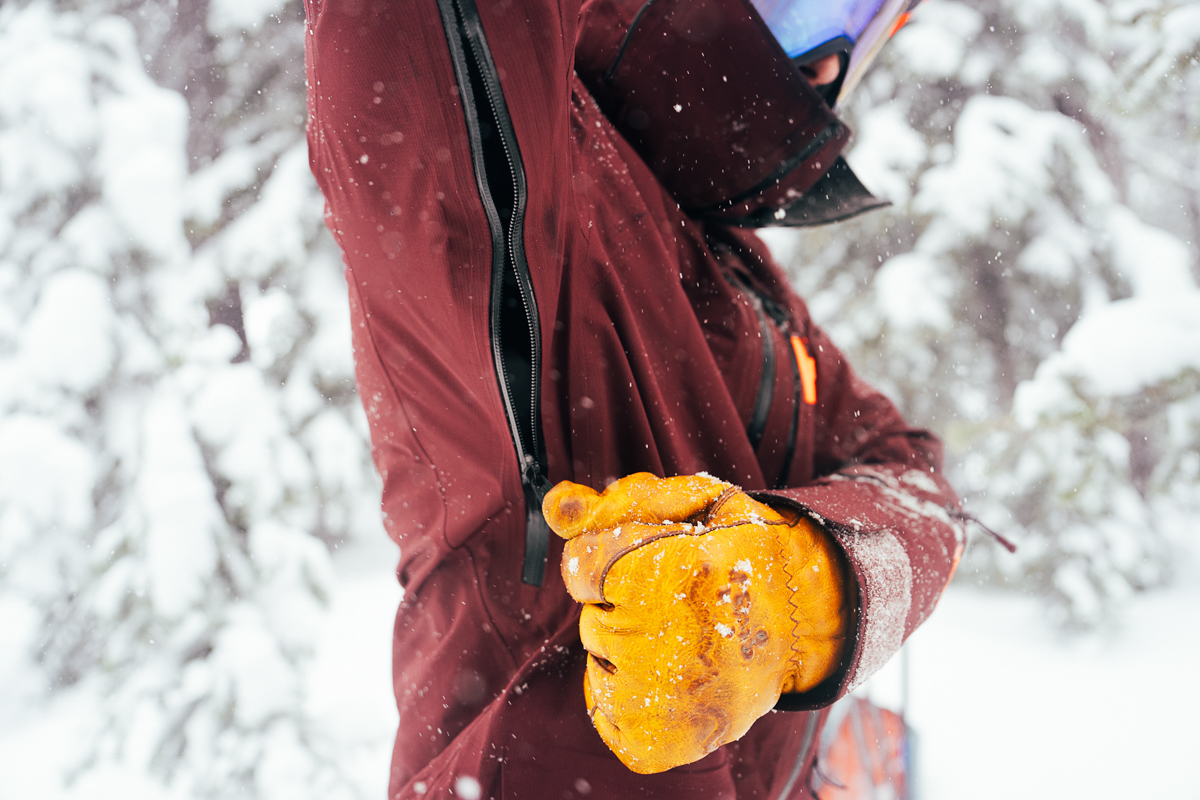
| Jacket | Price | Best For | Waterproof | Weight | Pockets | Recco |
|---|---|---|---|---|---|---|
| Helly Hansen Ridge Infinity | $650 | Resort | 3L Helly Tech Pro | 1 lb. 10.1 oz. | 6 | Yes |
| REI Co-op First Chair GTX | $319 | Resort | 2L Gore-Tex | 1 lb. 10.5 oz. | 9 | No |
| Trew Gear Cosmic Primo | $499 | Resort | 3L PNW Primo | 1 lb. 14.1 oz. | 8 | Yes |
| Arc'teryx Sabre Jacket | $750 | Resort/backcountry | 3L Gore-Tex | 1 lb. 8.9 oz. | 6 | Yes |
| Flylow Gear Malone Jacket | $400 | Backcountry/resort | 3L Tactic | 1 lb. 8.0 oz. | 5 | No |
The Helly Hansen Ridge Infinity Shell is a highly protective and well-built ski jacket, but it doesn't come cheap at $650. For casual resort-goers and those on a budget, REI Co-op's First Chair GTX is a standout value at $319. In testing the Ridge Infinity and First Chair side by side, we immediately noticed that the REI had poor wind resistance—enough so that we frequently needed to add another layer underneath on gusty days and when skiing downhill at speed. The First Chair does fend off moisture well thanks to its proven Gore-Tex membrane, although the 2-layer construction is a step down in both breathability and durability compared to the Ridge Infinity's 3-layer build. When worn back to back, the REI had a noticeably less confidence-inspiring feel than the Ridge Infinity, although both jackets have held up well to consistent resort use. In the end, we think frequent skiers will benefit from spending up for the Helly Hansen, but the First Chair is a perfectly serviceable alternative at a great price.
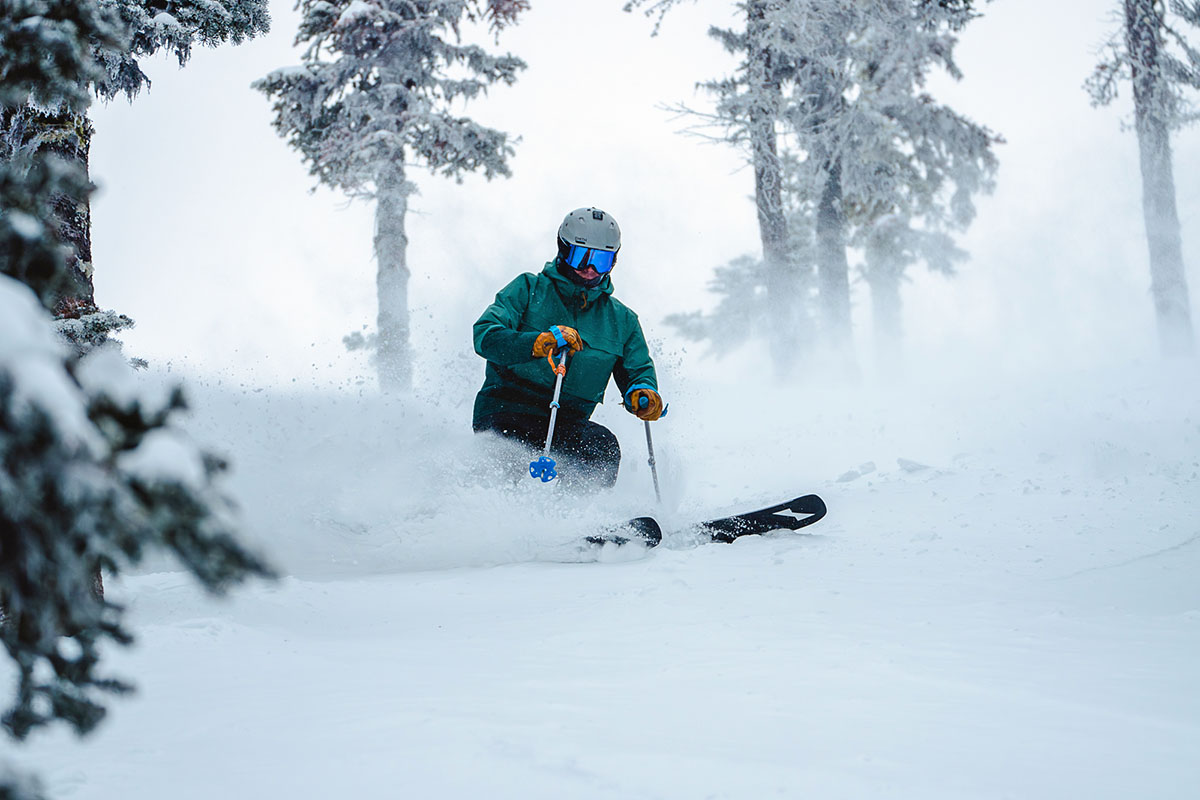
Next up is Trew Gear's Cosmic Primo Jacket, which shares a lot of similarities with the Ridge Infinity. First is fit: Both jackets have a roomy, freeride-inspired cut that makes it easy to layer underneath. Second is durability, with both jackets using high-quality materials that stand up well to frequent use. Weather protection is also comparable between Helly Hansen's Helly Tech Professional membrane and Trew's PNW Primo technology, although neither jacket offers enough breathability for heart-pumping backcountry missions. In parsing out the differences, the Cosmic Primo is heavier by 4 ounces but tacks on two additional pockets, along with improved mobility thanks to added stretch in the fabric (for more, see our in-depth Cosmic Primo Jacket review). In the end, unless the added weight is a dealbreaker for you, we think the Cosmic Primo is the better all-around buy.
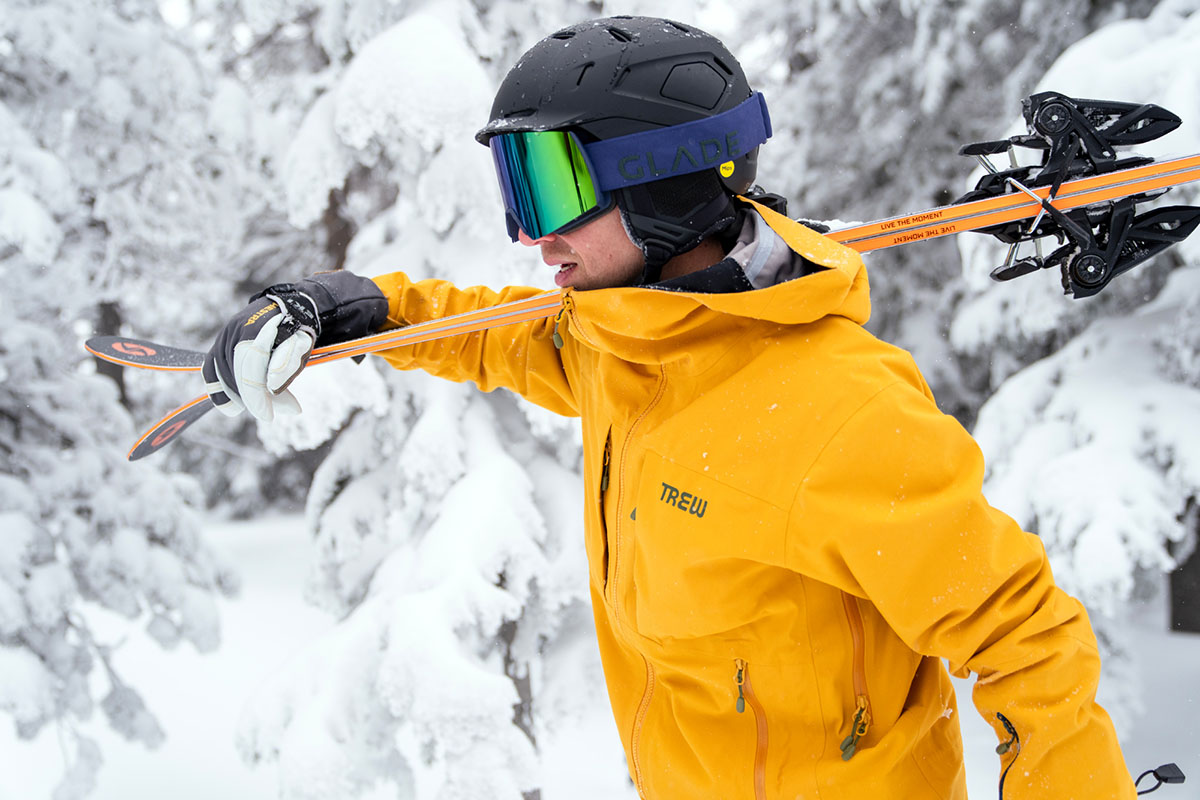
Arc'teryx's Sabre has topped our ski jacket rankings for years and remains one of the most premium options on the market. Compared to the Ridge Infinity, the Sabre's 3-layer Gore-Tex construction offers class-leading weather protection and holds up extremely well to long-term use. You also get a very similar feature set—including six total pockets, a powder skirt, a Recco reflector, and an adjustable and helmet-compatible hood—for around an ounce less than the Helly Hansen. The Sabre also tacks on a light flannel backer, which adds a nice dose of next-to-skin comfort alongside a modest dose of warmth. Only you can decide whether or not the Arc'teryx is worth an extra $100, but there's no denying the Sabre's overall quality and attention to detail.
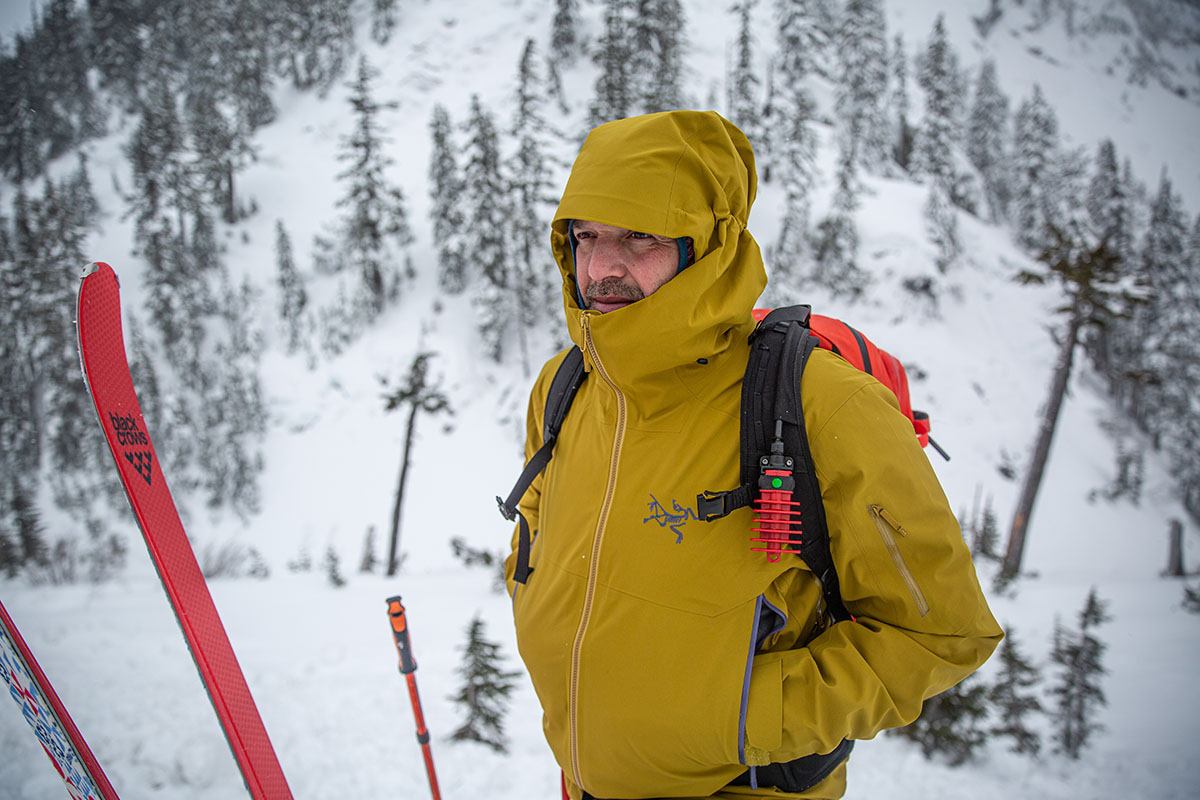
Last but not least is Flylow Gear's Malone Jacket, which is a little more appealing for touring than it is for inbounds use but crosses over nicely between the two disciplines. The biggest difference between the Malone and Ridge Infinity is that the Flylow uses a stretchy, softshell-like construction (Flylow's 3L Tactic membrane) that offers standout comfort. It's not as impervious as the Ridge Infinity's Helly Tech build, but the upside is excellent mobility and a much softer next-to-skin feel. We also think Flylow nailed the styling of the Malone—particularly in the tri-color patterns—and all the materials have impressed us from a quality standpoint. For primarily resort-goers who live in particularly wet climates, we think the Ridge Infinity is worth the price and weight penalties. But for mixed in- and out-of-bounds use, especially in areas that see a lot of dry snow (like the Rocky Mountains), the Flylow is more versatile.
If you’re thinking about buying gear that we’ve reviewed on Switchback Travel, you can help support us in the process. Just click on any of the seller links above, and if you make a purchase, we receive a small percentage of the transaction. The cost of the product is the same to you but this helps us continue to test and write about outdoor gear. Thanks and we appreciate your support!
Depending on the seller, most products ship free in the United States on orders of $50 or more. International shipping availability and rates vary by seller. The pricing information on this page is updated hourly but we are not responsible for inaccuracies.